Faith, Modern Spectacle and Money
Abhijit Dasgupta
Durga, our daughter, fierce and strong,
Born to battle what is wrong.
But today you hide in painted light,
In glamour’s shade, away from fight.
Glitter masks the wounds we know,
While deeper still, the wrongs do grow.
O Mother, when will your fire rise—
With blazing arms and burning eyes?
To strike the dark, the filth, the dust,
And cleanse the world of greed and lust.
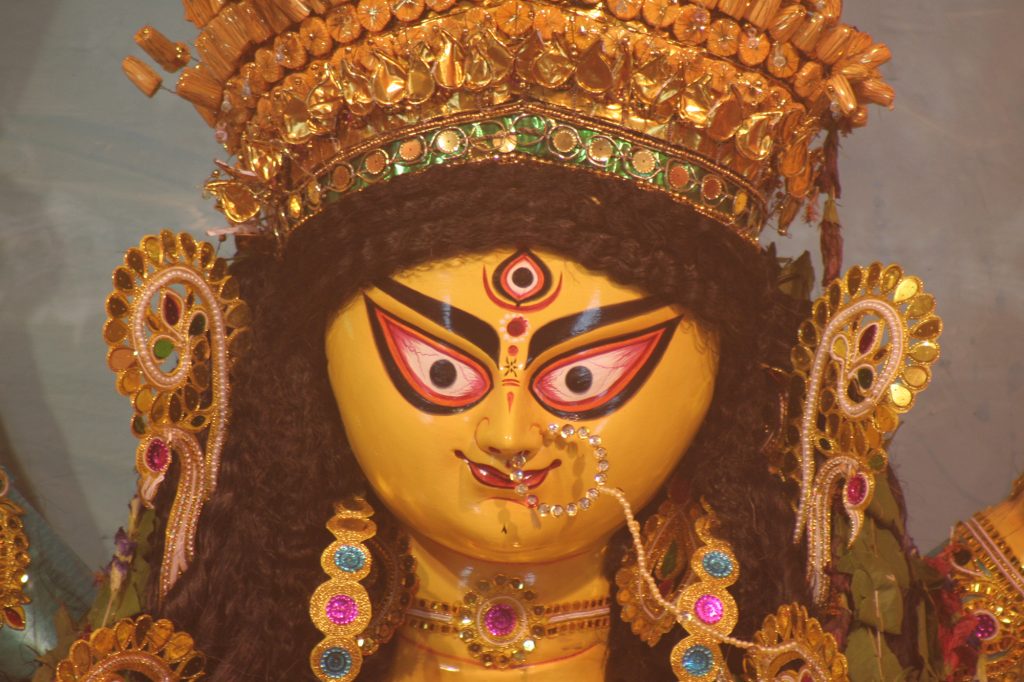
An octogenarian’s reflections often become food without spice, no salt— tasteless, yet too stubborn for the trash bin. Here is one.
Durga Puja, Bengal’s grandest festival, is far more than a religious observance. It is theatre, carnival, ritual, and memory woven together. For five glittering autumn days, the goddess Uma returns home, and the state transforms into a stage of lights, music, devotion, and artistry. UNESCO’s recognition of the festival as intangible cultural heritage has only reinforced its global stature.
Yet beneath the glow of pandal lights and the drumbeat of dhaks lies an older and more complex story; of politics disguised as religion, of superstition masked as devotion, of commerce eclipsing craft, and of myth caught between symbolism and science. To understand Durga Puja is not only to marvel at its splendour but to reckon with the shadows it carries.
The roots of today’s spectacle lie deep in Bengal’s colonial past. In the 18th century, when the East India Company consolidated power, the festival became a political stage. Wealthy zamindars—flush with land revenues and eager to curry favour with the new rulers—turned Puja into a theatre of opulence.

The most famous example is Nabakrishna Deb’s Sovabazar Puja, where Lord Clive himself appeared after the Battle of Plassey. The irony was cruel: only months earlier, Nawab Siraj ud-Daulah had burnt down Calcutta’s only church. Yet now, the British masters sat as honoured guests at a Hindu festival, entertained by banquets and nautch girls, while the goddess became little more than a bargaining token to fulfil the aspirations of the sycophants.
This marked a turning point. What had once been a household worship of Durga, rooted in devotion, was converted into a public display of loyalty and influence. Religion merged with politics, faith bent under the weight of spectacle.
The pattern continues. Where zamindars once wielded banquets and offered ‘Nautch’ girls from lower castes, modern politicians and corporations use billboards, slogans, campaign songs, and corporate sponsorships. The budgets of many urban pujas now run into crores, and pandals become platforms for electoral influence as much as artistic expression.
The goddess, instead of being a unifying mother, often serves as a prop in Bengal’s theatre of power. Just as in the 18th century, devotion is frequently overshadowed by exaggerated display of pomp and grandeur.
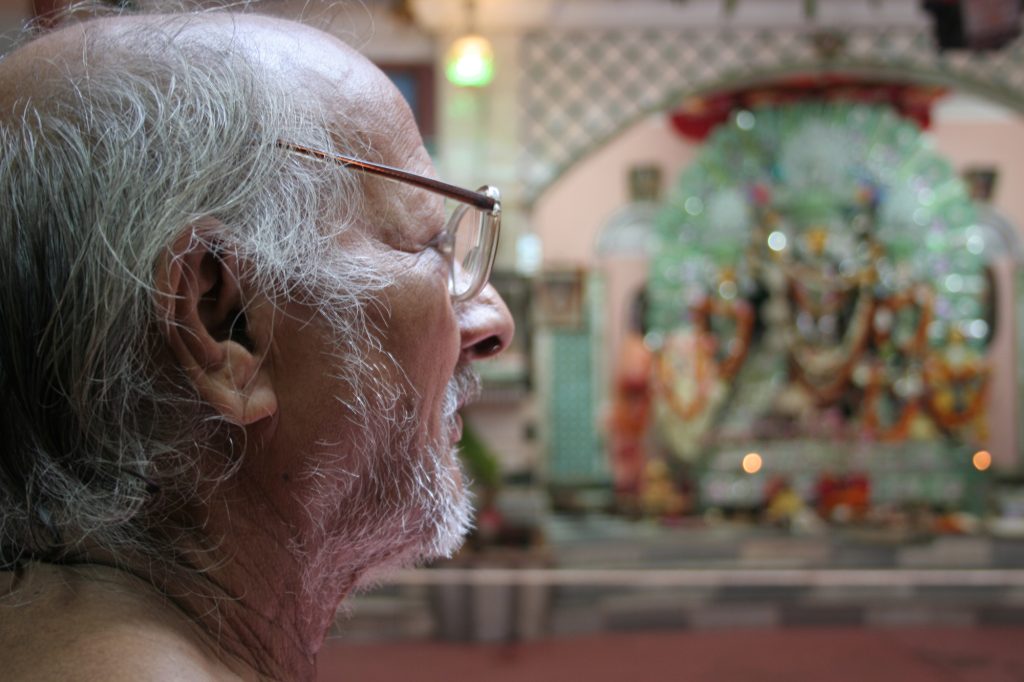
In 1910, two young brothers of the Sardar family were humiliated at the opulent Durga Puja of the wealthy Sarkars. In that era, aristocratic households staged their Pujas as spectacles—lavish banquets for the British, orchestras, fireworks, even nautch performances. To common people, entry was restricted, and devotion became secondary to display. The humiliation stung the brothers not only personally but symbolically; the goddess herself seemed caged within the walls of privilege. They vowed that one day they would host a Durga Puja where the doors would remain open to all.
It took until 1942 for that promise to be fulfilled. Their puja was more than worship—it was a polite protest. In an age when elitism dominated religion, the Sardar brothers reclaimed Durga as the mother of everyone, not just the chosen few.
One of the most powerful traditions of Bengal’s Durga Puja is the making of the clay idol. The sacred clay (kumari mati) is collected not only from riverbanks but also from the doorstep of a prostitute’s house. This act carries profound symbolism: it erases social boundaries and declares that the Mother belongs to all — high or low, pure or stigmatized. The soil from society’s margins merges into the goddess herself, turning Durga into the true “Mother for All.”
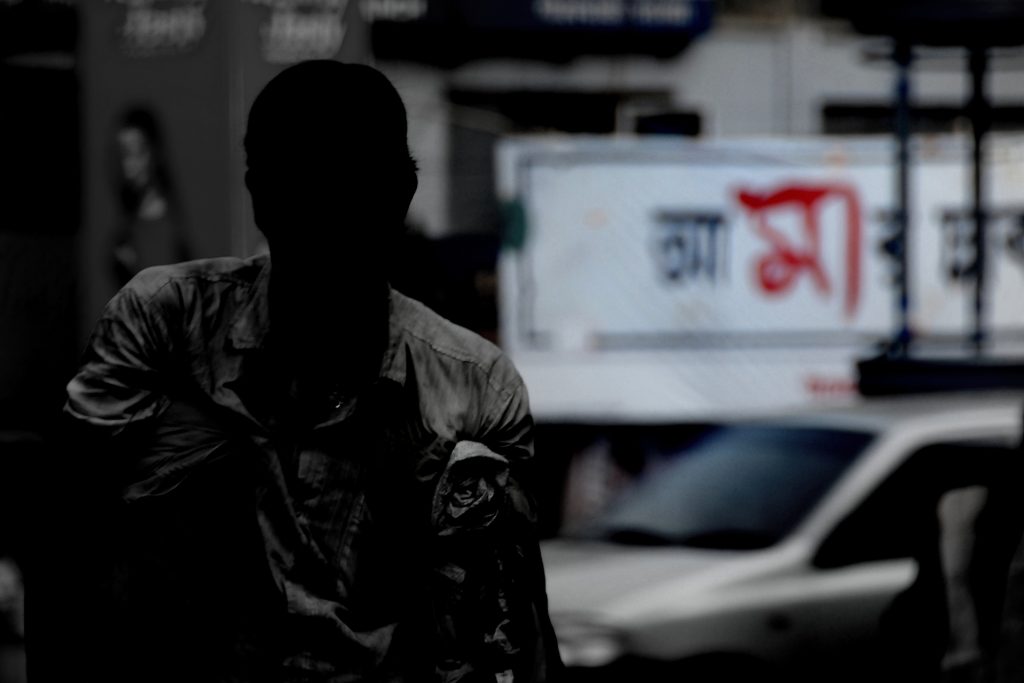
This tension between opulence and faith had been observed much earlier. Colonial newspapers often commented, sometimes with mockery, on Bengal’s “theatrical” Pujas:
In the Calcutta Courier (1857), one article sneered that “Madam Doorga, so long the favourite of native grandees, may vanish altogether should the stream of English patronage be withdrawn.” The suggestion was clear: without British approval, the goddess herself would lose prestige.
The Friend of India papers carried wry accounts of British officers dining at Shobhabazar Rajbari’s puja, where Lord Clive once arrived on elephant-back, turning devotion into a political theatre.
Later, Amrita Bazar Patrika and Bengalee began critiquing the same extravagance, pointing out how wealth was squandered while famine and poverty stalked Bengal’s villages. These editorials planted early seeds of the idea that true faith cannot thrive under vanity.
The Bhakti saints once sang against ritualistic pomp; the Satnamis rose against exclusion; Gandhi framed Ganesh Utsav as a people’s festival rather than a display of aristocratic power. The Sardar brothers, in their modest 1942 puja, stood within this continuum of quiet revolts.
Today, the cycle repeats. With multimillion-rupee pandals that mimic palaces or pyramids, and carnival processions – a traveling amusement show, Durga Puja once again risks being consumed by spectacle. It generates money and certainly the poor gain from these. But alongside, there are smaller voices—eco-conscious pandals, rural community pujas, and even some “bonedi bari” traditions that hold on to rituals stripped of extravagance. They stand as reminders that worship is strongest when it is shared, not staged.
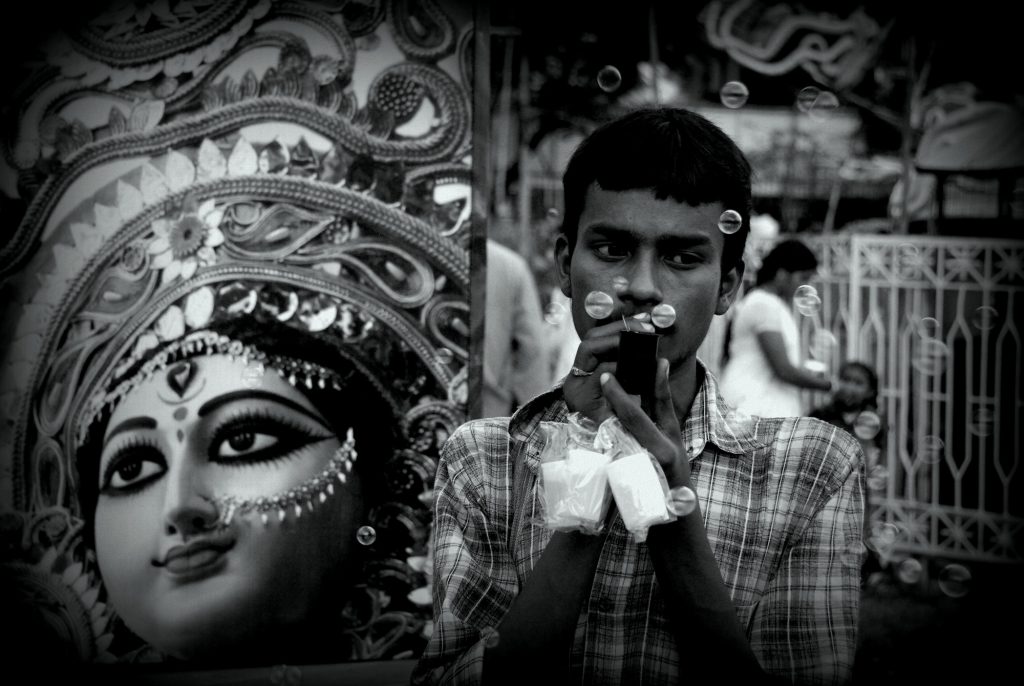
The question is, will Bengal once more hear the call of protest—this time not against zamindar vanity, but against dazzle only culture —so that Durga may again return as the universal mother, unbound by wealth or exclusivity?
Alongside politics, superstition has crept into the heart of the festival. Indoctrinated priests often insist on elaborate rituals—costing devotees fortunes—arguing that without them the goddess’s blessings will not descend. Fortune-tellers and self-styled spiritual guides thrive during the season, offering promises of prosperity in exchange for offerings.
The simplicity of faith gets lost in ritualistic excess. Religion becomes transaction. What should be a personal act of devotion turns into a marketplace of invented rites, where the currency is not sincerity but payment, in money, kind or allegiance.
Commerce, too, has transformed the festival. Artisans of Kumartuli, the traditional clay sculptors, spend the year creating idols that sustain the Puja. Yet they remain among the least rewarded. Their craft, rooted in sacred tradition, is diluted by demands for cinema-inspired idols and pandals modeled on global monuments or Bollywood sets.

The traditional ekchala idol—Durga standing with her children in a single frame—faces near extinction, replaced by fragmented, theatrical interpretations. Smuggled Chinese lights illuminating the streets, squeezing out the art of local craftsmen. In Mumbai, fibre glass Ganesh has become popular. Thus, the homecoming of the goddess risks turning into exile for the very artisans who gave the form. Even the act of pandal-hopping, once about artistic reverence and quiet awe, increasingly resembles a carnival of fashion shows, celebrity endorsements, and product launches. Pujas compete like film releases—who has the tallest idol, the most elaborate pandal, the boldest theme.
What was meant to be community bonding often becomes borrowed glamour. The festival bends beneath cinema screens and corporate banners, risking a break from the very tradition it claims to uphold.
But Durga Puja is also about stories—stories that keep evolving in every generation. Among them, none is more profound than the tale of Ram’s Akal Bodhan.
Traditionally, Durga was worshipped in spring (Basanti Puja). Yet the Ramayana tells us that before his battle with Ravana, Ram invoked Durga in the autumn—akal or untimely—worship. He offered 108 blue lotuses to the goddess. When he found one missing, he prepared to pluck out his own eye—famed as lotus-like—to complete the offering. Moved by his devotion, Durga appeared and blessed him for victory.

This story not only explains why Bengal celebrates Durga Puja in autumn but also underlines a larger truth: that rituals and calendars may shift, but devotion is what gives them meaning. Ram’s invocation was not about spectacle but about surrender, not about politics but about faith.
In the Akal Bodhan lies a reminder of what Puja could be—an act of simple, profound worship where sincerity matters more than a carnival.
If Ram’s invocation represents devotion at its purest, another story from the Ramayana illustrates the risk of confusing symbolism with science; the tale of the Pushpak Rath.
According to the epic, after defeating Ravana, Ram returned to Ayodhya in the Pushpak Vimana—a flying chariot originally owned by Kubera. For centuries, devotees treated it as poetic metaphor. In the 20th century, however, the Vaimanika Shastra surfaced, claiming to describe ancient aerodynamics. Enthusiasts hailed it as evidence of India’s forgotten aviation past.
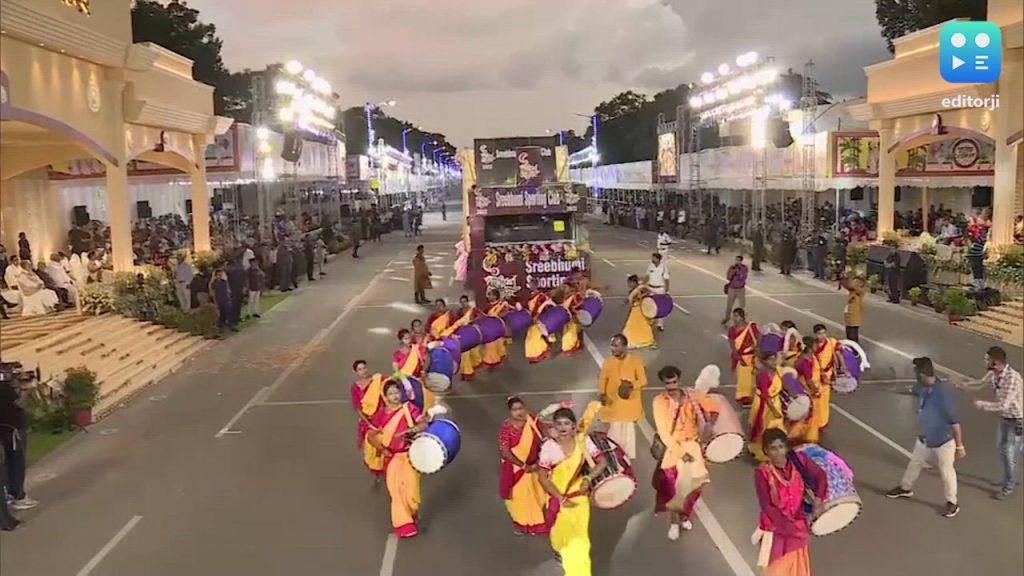
But in 1974, the Indian Institute of Science examined the designs and declared them aeronautically impossible. The danger here is real: when poetry is mistaken for physics, myth for manual, imagination for engineering. Epics like the Ramayana and Mahabharata are cultural treasures, not blueprints for technology.
Hanuman’s leap across the ocean, too, may be read as a timeless dream of breaking earthly limits—a metaphor for human aspiration, not an account of space travel.
Yet in today’s society, such myths are often packaged as literal truths. Leaders and influencers invoke them not as symbols but as proofs of ancient technological supremacy. In a country where education often means rote learning, where Swami Vivekananda’s vision of “man-making education” remains unrealized, superstition finds fertile ground.
Rituals become institutionalized. Breaking coconuts, lighting lamps, or offering costly prayers are sold as solutions to personal or collective crises. For a suffering population, these acts may offer temporary psychological relief. But when endorsed by political leaders or religious authorities, they risk becoming tools of manipulation.
Faith becomes dependency. People lose confidence in their own strength, surrendering instead to ritual prescriptions.

This confusion between myth and fact is not unique to India. Eric von Däniken’s Chariots of the Gods argued that ancient monuments like the pyramids or the Nazca lines were built with alien help, since humans allegedly lacked the necessary technology. Archaeologists, however, proved otherwise: Egyptians used copper chisels, ramps, and human ingenuity; the Incas mastered stone-cutting techniques still admired today.
Von Däniken was accused of mistranslating and misrepresenting evidence. Yet his theories, much like claims of Pushpak Vimanas, captivated the public imagination. The risk lies in allowing pseudoscience to replace critical inquiry.
Durga Puja, therefore, stands at a crossroad. On one side is its cultural magnificence: community bonding, artistic innovation, spiritual devotion, and mythic storytelling. On the other side lie its distortions: superstition sold as truth, politics masquerading as faith, commerce overpowering craft.
The challenge is to preserve the former without succumbing to the latter. To cherish mythology without mistaking it for manual. To celebrate spectacle without letting it consume sincerity. To protect artisans and traditions from being buried under imported lights and corporate banners.

Above all, to remember Ram’s Akal Bodhan—that true worship is not in the extravagance of offerings but in the devotion of the heart.
Durga’s annual visit is meant to be the homecoming of a daughter, welcomed with joy, reverence, and love. If the festival is to remain the soul of Bengal, it must shed the baggage of unnecessary rituals, superstitious manipulations, and commercial greed.
Uma deserves more than being reduced to a stage prop for votes, fortunes, or fashion shows. She deserves what Ram once gave her—sincere devotion, born of faith and courage.
Durga Puja, in its truest sense, is not about power or politics. It is about reclaiming confidence, dignity, and the will to fight against darkness. The ‘asura’—whether that darkness is Ravana in myth, colonialism in history, or ignorance and exploitation in the present.
